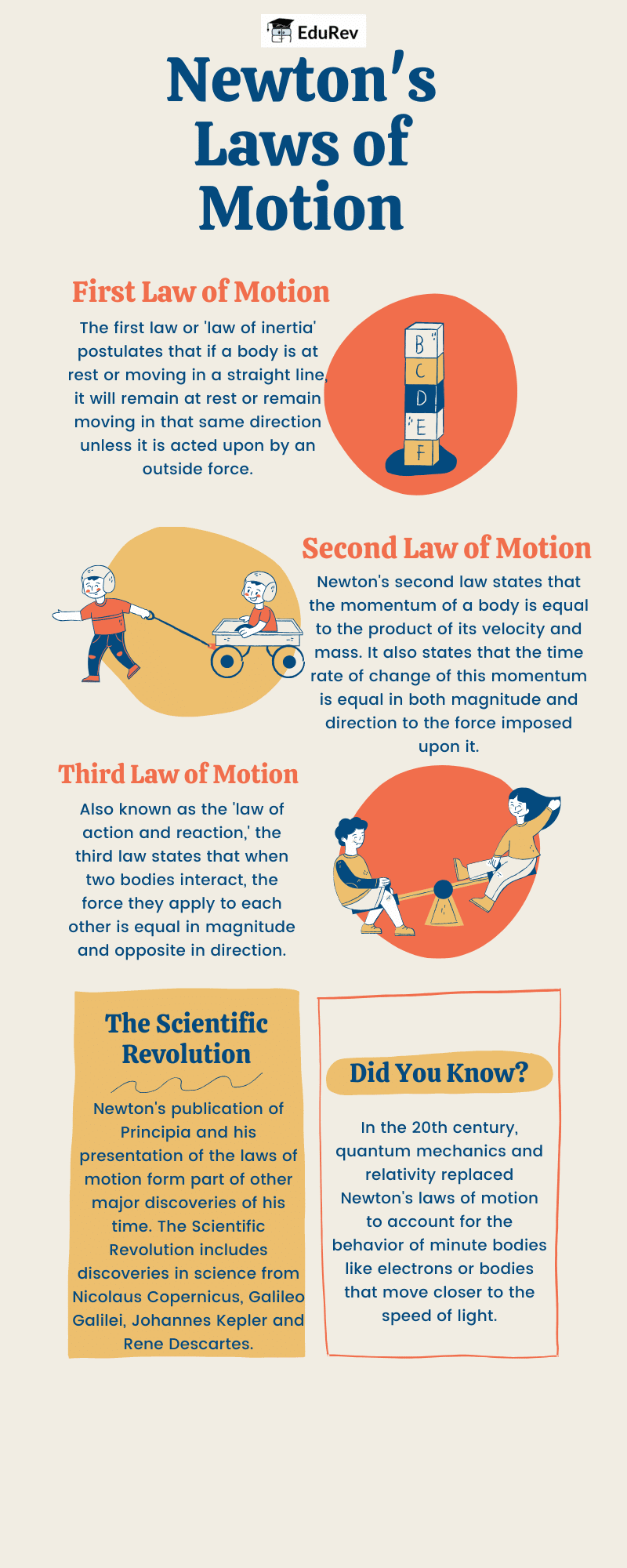Class 9 Exam > Class 9 Notes > Science Class 9 > Infographics: Newton's Laws of Motion
Infographics: Newton's Laws of Motion | Science Class 9 PDF Download

The document Infographics: Newton's Laws of Motion | Science Class 9 is a part of the Class 9 Course Science Class 9.
All you need of Class 9 at this link: Class 9
|
85 videos|549 docs|60 tests
|
FAQs on Infographics: Newton's Laws of Motion - Science Class 9
| 1. What are Newton's Three Laws of Motion? |  |
Ans.Newton's Three Laws of Motion describe the relationship between the motion of an object and the forces acting on it. The first law states that an object at rest stays at rest, and an object in motion stays in motion unless acted upon by an external force. The second law establishes that the acceleration of an object is directly proportional to the net force acting on it and inversely proportional to its mass. The third law states that for every action, there is an equal and opposite reaction.
| 2. How do Newton's Laws of Motion apply in everyday life? |  |
Ans.Newton's Laws of Motion are evident in various everyday situations. For instance, when driving a car, the first law explains how the car remains stationary until the driver accelerates. The second law is observed when heavier objects require more force to move than lighter ones. The third law can be seen when a swimmer pushes against the water to propel themselves forward; the water pushes back with equal force, allowing them to move.
| 3. Can you provide examples of Newton's Laws of Motion in sports? |  |
Ans.In sports, Newton's Laws are demonstrated through various actions. For example, in basketball, a player jumping to shoot is acting on the third law; the force applied to the ground propels them upward. The second law is evident in a soccer ball being kicked; the harder the kick (force), the faster the ball accelerates. The first law is seen when a ball rolls on the ground and eventually stops due to friction.
| 4. What is the significance of Newton's Laws of Motion in physics? |  |
Ans.Newton's Laws of Motion are foundational principles in physics that explain how objects behave under various forces. They are crucial for understanding concepts in mechanics, helping to predict and quantify motion. These laws form the basis for classical mechanics and have applications in engineering, aerodynamics, and many other fields.
| 5. How did Newton's Laws of Motion change our understanding of the universe? |  |
Ans.Newton's Laws of Motion revolutionized our understanding of the universe by introducing the concept that natural phenomena follow specific laws. Before Newton, motion was often viewed as erratic and influenced by mystical forces. His laws provided a systematic framework to explain and predict the motion of objects, leading to advances in science, technology, and our overall comprehension of physical laws governing the universe.
Related Searches
















